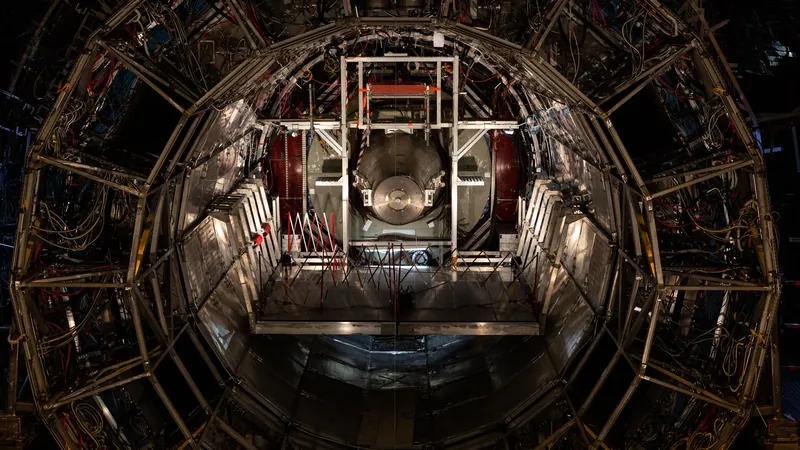
Revolutionary Breakthrough: World's Largest Atom Smasher Turns Lead into Gold—Only to Destroy It in an Instant!
2025-05-09
Author: Arjun
Forget about the elusive philosopher's stone; modern science has taken a quantum leap in a centuries-old quest that medieval alchemists dreamed of: turning lead into gold! This astonishing feat has been accomplished at the Large Hadron Collider (LHC) at CERN, and the results are nothing short of magical.
Between 2015 and 2018, during its second run, the LHC generated a staggering 86 billion gold nuclei by smashing lead atoms together at an eye-popping 99.999993% the speed of light. Yet, the total amount of gold produced was just a microscopic fraction—29 trillionths of a gram! This blink-and-you-miss-it creation quickly collided with the beam pipe, disintegrating in a fraction of a second. However, this fleeting moment was captured by the sensitive detectors of the ALICE (A Large Ion Collider Experiment) collaboration.
Marco van Leeuwen, spokesperson for ALICE, commented on the remarkable capability of their detectors, stating, "It is impressive to see our detectors handle head-on collisions producing thousands of particles while being sensitive enough to study rare electromagnetic 'nuclear transmutation' processes." This achievement highlights how far we've come since the days when alchemists believed lead’s similarity to gold suggested it could be transformed.
The historical beliefs of alchemists, who speculated that lead was simply "sick" and could be cured by transmutation, had a basis in the reality of the periodic table: gold contains 79 protons, merely three fewer than lead. This proximity means that smashing lead atoms can effectively strip away those protons to produce gold. In contrast, removing fewer protons results in thallium or mercury, thus showcasing the uniqueness of gold.
To measure the production of these metals, researchers utilized ALICE's sophisticated Zero Degree Calorimeters (ZDCs), designed to track the protons and neutrons released from billions of particle interactions every second.
Current findings indicate that gold is produced at a rate of approximately 89,000 nuclei per second in the ongoing third run of the LHC, nearly doubling from the last run due to enhanced energy levels. Uliana Dmitrieva from the ALICE collaboration remarked, "Thanks to the unique capabilities of the ALICE ZDCs, this analysis marks the first systematic detection of gold production at the LHC experimentally."
This groundbreaking research does not just hold the allure of ancient alchemy but also delves into the possibilities of fundamentally altering our understanding of matter at the subatomic level. What’s next in this epic journey through the fabric of the universe?

 Brasil (PT)
Brasil (PT)
 Canada (EN)
Canada (EN)
 Chile (ES)
Chile (ES)
 Česko (CS)
Česko (CS)
 대한민국 (KO)
대한민국 (KO)
 España (ES)
España (ES)
 France (FR)
France (FR)
 Hong Kong (EN)
Hong Kong (EN)
 Italia (IT)
Italia (IT)
 日本 (JA)
日本 (JA)
 Magyarország (HU)
Magyarország (HU)
 Norge (NO)
Norge (NO)
 Polska (PL)
Polska (PL)
 Schweiz (DE)
Schweiz (DE)
 Singapore (EN)
Singapore (EN)
 Sverige (SV)
Sverige (SV)
 Suomi (FI)
Suomi (FI)
 Türkiye (TR)
Türkiye (TR)
 الإمارات العربية المتحدة (AR)
الإمارات العربية المتحدة (AR)